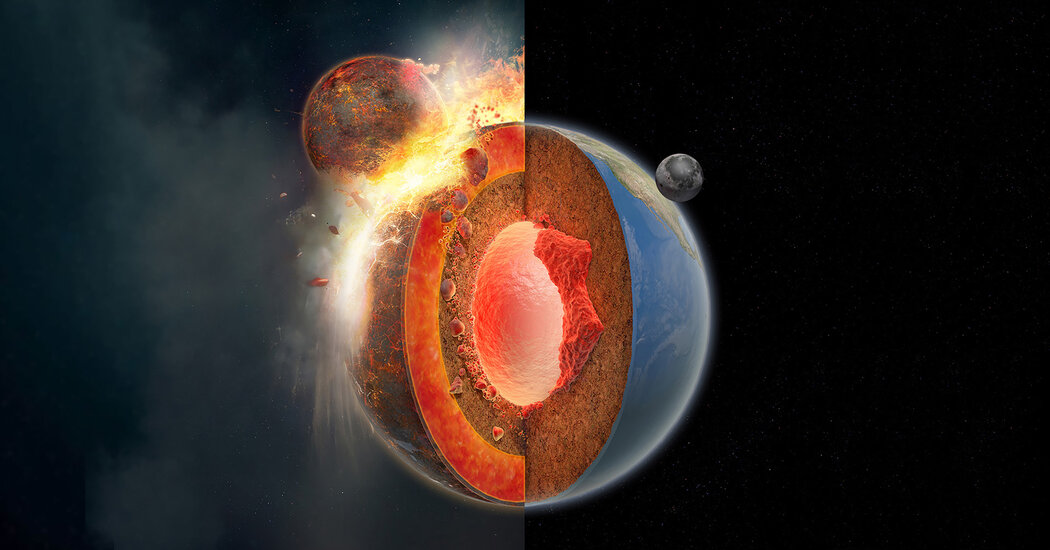Some 4.5 billion years ago, many scientists say, Earth had a meetup with Theia, another planetary object the size of Mars. When the two worlds collided in a big whack, the thinking goes, debris shot into space, got locked into the orbit of the young, damaged Earth and led to the formation of our moon.
But the collision with Theia may have done more than that, according to a study published last month in the journal Geophysical Research Letters. The impact may have given rise to something else: plate tectonics, the engine that drives the motion of Earth’s giant continental and oceanic plates and causes earthquakes, volcanic eruptions and the eventual remaking of our planet’s surface about every 200 million years.
Earth scientists have long studied and debated the origin of plate tectonics, and other theories have been offered. Qian Yuan, a postdoctoral researcher at the California Institute of Technology and an author of the new paper, and his colleagues make the case for the Theia collision as the source of plate tectonics. They reason from computer simulations that the event produced the heat needed in Earth’s early days to get the process going.
Tectonics starts with superheated plumes of magma from close to Earth’s core rising and sitting beneath the planet’s plates. The plumes can weaken the crust, and lava can erupt and push aside overriding plates.
Driven by the erupting lava, plates scrape past and collide with each other, and they can also dive beneath other plates and into the planet’s interior in a process called subduction.
In earlier research, Dr. Yuan described continent-size “blobs” floating some 2,000 miles beneath Earth’s surface near the core. He and his team think those blobs are remnants of Theia that, delivered violently, created the heat needed to form the first tectonics-driving plumes. The giant blobs are believed to be connected to magma plumes, which means the blobs could be fueling plate tectonics.
“Simulations show the catastrophic, moon-forming giant impact ignited the engine that drives plate tectonics,” Dr. Yuan said.
Another clue is in Western Australia. There, in a place called the Jack Hills, rocks contain crystals that formed about 4.4 billion years ago — not long, geologically speaking, after Theia struck Earth.
Those crystals in Australia, called zircons, form only where there is plate subduction, and subduction can happen only on a planet with active plate tectonics.
Once Dr. Yuan learned that the zircons formed relatively soon after the Theia impact, he became convinced the collision had something to do with the start of plate tectonics.
Bradford Foley, a geophysicist at Pennsylvania State University, thinks that the idea of plate tectonics starting from a planetary collision has merit. But it is not the only way tectonics can start, he says.
“The giant impact is one possible way to make Earth’s core initially very hot,” he said. “It’s an interesting idea that I’m glad to see published for the scientific community to debate, but can easily be oversold and over-dramatized to the general public.”
An alternative explanation that the study does not refute, he says, is that the planetary core’s initial formation may have made it hot enough for tectonic activity to begin.
The challenge, Dr. Yuan explained, is in accurately representing the physical states of our planet from over four billion years ago.
“We have confidence in our model, but does it really represent the whole true Earth?” Dr. Yuan said. “That’s a question to be explored by future tests.”
The post A Big Whack That Made the Moon May Have Also Created Continents That Move appeared first on New York Times.

